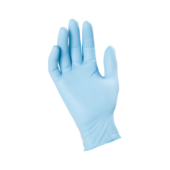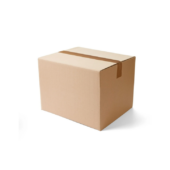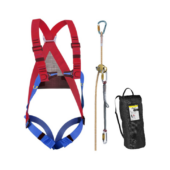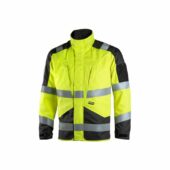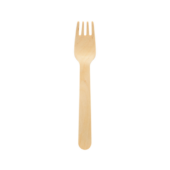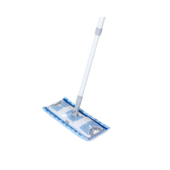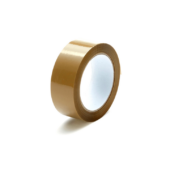Struggling to choose the right insulation for your winter work jacket? Insulation is the key to staying warm, comfortable, and productive during cold-weather tasks.
In this guide, we’ll demystify the differences between down and synthetic insulation, equipping you with the knowledge to make the perfect choice.
Plus, as part of our comprehensive winter workwear series, we’ll ensure you’re ready to tackle your next challenge—whether it’s finding the right layering system or pairing your jacket with other essential winter gear.
Don’t miss our main guide, How To Choose Work Jackets For Winter: A Comprehensive Guide, for an even deeper dive.
What Is Down Insulation?
Down insulation is made from the soft under-feathers of ducks or geese, prized for their exceptional ability to trap heat. These feathers create pockets of air that provide a natural, lightweight warmth unmatched by synthetic alternatives.
Advantages of Down Insulation
- Superior Warmth-to-Weight Ratio: Down is extremely efficient, offering maximum warmth with minimal bulk.
- Long-lasting: With proper care, down jackets can maintain their insulating properties for years.
- Packability: Down compresses easily, making jackets highly portable and ideal for jobs requiring mobility.
Limitations of Down Insulation
- Moisture Sensitivity: Down performs best in dry conditions but can be paired with water-resistant shells for wet environments to maintain its insulating properties. Opt for water-resistant treatments or combine with waterproof shells for protection.
- Maintenance: Requires careful washing and drying to prevent clumping.
What Is Synthetic Insulation?
Synthetic insulation is made from polyester fibers designed to mimic down’s heat-trapping properties while addressing some of its drawbacks. It is a versatile, cost-effective option for various industries.
Advantages of Synthetic Insulation
- Water Resistance: Synthetic materials retain warmth even when wet, making them ideal for damp or snowy environments.
- Durability: Synthetic fibers are less prone to wear and tear, requiring less maintenance.
- Affordable: Generally more budget-friendly than high-quality down options.
Limitations of Synthetic Insulation
- Bulkier: Synthetic insulation tends to be heavier and less compressible.
- Shorter Lifespan: Synthetic materials provide consistent insulation for regular use over a few seasons, making them a reliable option for short-to-medium-term needs.
For further comparisons, read this article from Switchback Travel.
Down vs. Synthetic: A Practical Comparison
The following table highlights the key differences between down and synthetic insulation:
| Feature | Down Insulation | Synthetic Insulation |
| Warmth-to-Weight Ratio | Excellent (ideal for alpine regions or cold, dry climates) | Good (suitable for humid or wet environments) |
| Performance When Wet | Down performs best in dry conditions and can be enhanced with treatments for improved wet performance | Good (best for rainy or snowy conditions) |
| Durability | High (with proper care, great for long-term use) | Moderate (suitable for moderate use) |
| Maintenance | Performs best with specific care, such as down-specific detergents | Easy (machine washable with mild detergent) |
| Packability | Highly compressible (perfect for traveling or layering) | Less compressible (better for everyday, rugged use) |
| Cost | Higher upfront cost (long-term investment) | Affordable (great for budget-conscious buyers) |
Choosing the Right Insulation for Your Needs
When deciding between down and synthetic insulation, consider these key factors:
- Climate: In wet and humid environments, synthetic insulation is the better choice due to its water-resistant properties. For cold and dry conditions, down insulation provides superior warmth.
- Activity Level: High-mobility tasks may benefit from lightweight and packable down jackets, while stationary or light activities might be well-suited to synthetic jackets.
- Budget: If cost is a significant factor, synthetic options typically offer better value.
Recommended Winter Work Jackets

Explore our Winter Work Jackets to find high-quality options featuring both down and synthetic insulation. For complete protection, consider pairing your jacket with Winter Work Gloves, Winter Safety Shoes, and Winter Work Pants.
Care Tips for Insulated Jackets
Proper maintenance extends the life of your insulated jackets:
- Down Jackets:
- Wash with a down-specific detergent.
- Dry on low heat with dryer balls to prevent clumping.
- Synthetic Jackets:
- Use a mild detergent and wash on a gentle cycle.
- Air-dry or tumble dry on low heat.
Additional Resources
To learn more about winter workwear, explore our related guides:
- How To Choose Work Jackets For Winter: A Comprehensive Guide
- How To Choose Work Pants For Winter
- Choosing The Right Work Gloves For Cold Weather: A Comprehensive Guide
Equip yourself with the right tools and stay protected in the harshest conditions. Visit our Winter Workwear Collection to explore all available options.
Conclusion
We hope this guide has provided clarity in choosing the best insulation type for your winter work jacket, helping you stay warm and efficient during cold-weather tasks. Whether you’re working in wet conditions or freezing, dry environments, the insights here will support your decision-making process.
Explore the diverse selection of Winter Work Jackets, featuring designs tailored for maximum warmth, durability, and style to meet all your cold-weather work needs., featuring trusted brands that cater to diverse needs. For additional winter workwear, check out Winter Work Gloves, Winter Safety Shoes, and Winter Work Pants to complete your cold-weather ensemble.
Have more questions about finding the perfect gear? Feel free to contact us. The Droppe Team is always here to ensure your safety, confidence, and satisfaction with every purchase.
Frequently Asked Questions
Yes. While both goose and duck down provide excellent insulation, goose down generally offers a higher fill power (warmth-to-weight ratio). This means a goose down jacket may be slightly warmer and more compressible than a similar duck down jacket. However, high-quality duck down can still perform exceptionally well, making both options suitable for cold-weather work.
Fill power is usually indicated on the product label or in the jacket’s specifications. It measures how many cubic inches one ounce of down can loft (expand) to fill. A higher fill power (e.g., 600–900) translates to greater warmth per ounce, meaning you get more heat retention with less bulk. For intense, cold-weather work, a high fill power can be a game-changer.
Absolutely. Synthetic-insulated jackets can be an effective mid-layer under a heavier coat or waterproof shell, especially in wet or snowy conditions. They trap heat without absorbing as much moisture as down might, making them highly versatile for layering systems in extreme cold or damp environments.
Yes. Some manufacturers source down responsibly, adhering to standards like the Responsible Down Standard (RDS), which ensures that birds are not subjected to unnecessary harm. If ethical sourcing is a priority, look for jackets labeled with such certifications, or consider high-quality synthetic insulation as an alternative.
It’s best to store down jackets uncompressed (e.g., hanging or in a breathable garment bag) so the feathers can maintain their loft. Synthetic jackets can usually be folded without as much concern for loft loss, but it’s still advisable to store them in a clean, dry area with minimal compression to prolong their lifespan.




